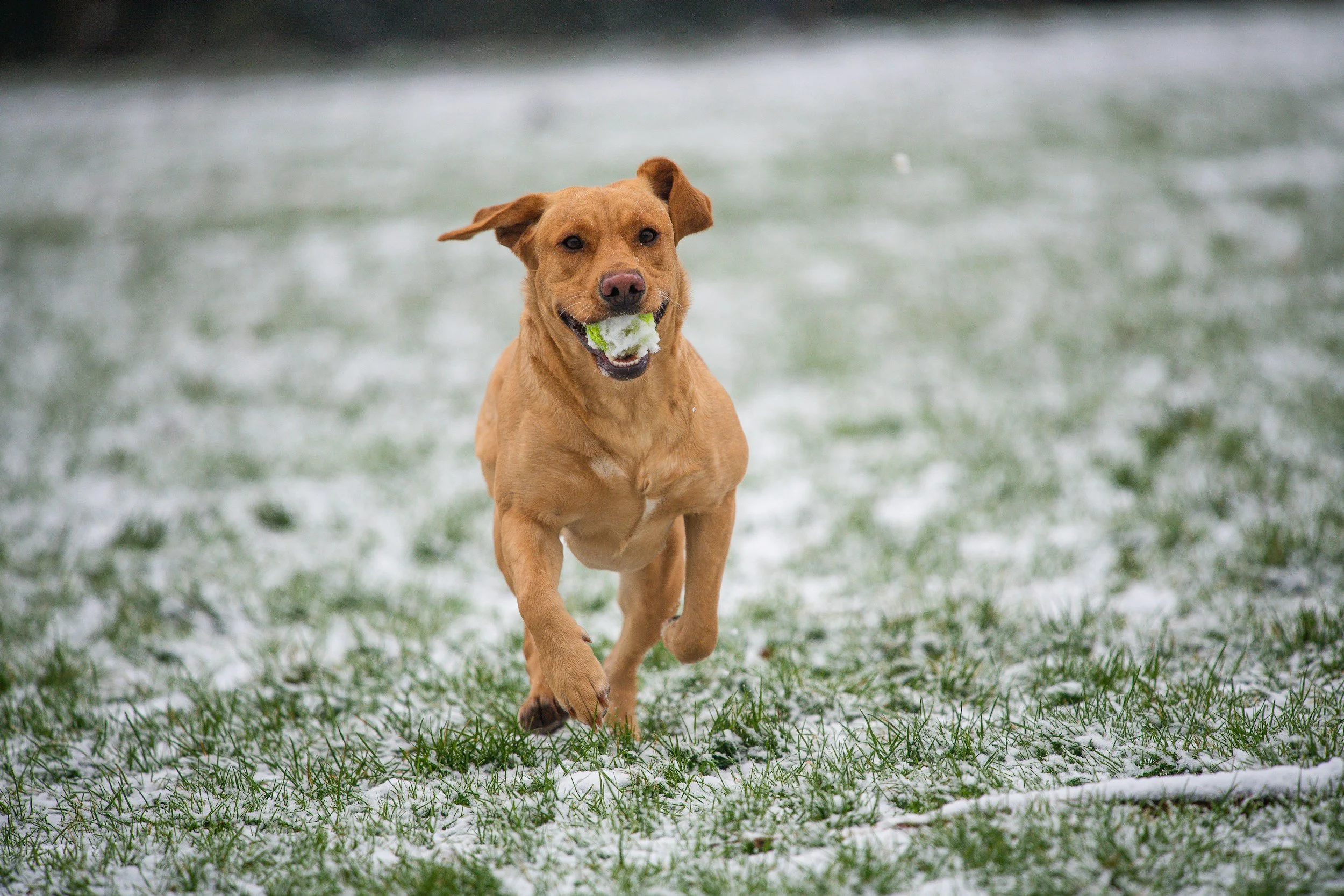Understanding ACL Tears in Dogs
ACL tears are one of the most common orthopedic injuries in dogs, often leading to pain, reduced mobility, and costly surgeries. The good news? Many ACL injuries can be prevented with proactive care and lifestyle adjustments. Let’s dive into the causes of ACL tears and how to help your dog avoid them.
What is an ACL Tear?
In dogs, the ACL (anterior cruciate ligament) is referred to as the cranial cruciate ligament (CCL). This ligament stabilizes the knee joint, and when it tears, it results in pain, inflammation, and lameness.
“ACL tears are a frustrating injury because they’re often avoidable with proper care,” says Denise Bozenski, holistic pet health coach and owner of Fetch This Canine. “Understanding the causes is the first step toward prevention.”
Learn more about Denise HERE!
Causes of ACL Tears in Dogs
Several factors can contribute to an ACL tear, including:
Obesity
Excess weight places strain on your dog’s joints, increasing the risk of injury. Over time, the additional stress can weaken the CCL, making it more prone to tearing.
“A species-appropriate diet and maintaining a healthy weight are essential in preventing ACL injuries,” Denise advises. For tips on transitioning to a healthier diet, The Benefits of a Raw Diet.
Overexertion
Sudden bursts of activity, like chasing a ball or jumping off furniture, can lead to ACL injuries, particularly in dogs with weaker ligaments.
“Controlled exercise is key. Structured play and avoiding high-impact activities can help protect your dog’s joints,” Denise explains.
For more on safe exercise options, check out The Benefits of Enrichment Activities for Pets.
Genetics and Breed Predisposition
Certain breeds, like Labrador Retrievers, Rottweilers, and Golden Retrievers, are more prone to ACL tears due to genetic predisposition or joint structure.
“While we can’t change genetics, we can focus on strengthening muscles and maintaining joint health to lower the risk,” Denise says.
Lack of Conditioning
Sedentary dogs are more likely to sustain injuries during sudden physical activity because their muscles and joints aren’t conditioned to handle the strain.
“A balanced exercise routine that includes strength-building and low-impact activities is essential for keeping your dog in peak condition,” Denise suggests.
Early Spaying and Neutering
Spaying or neutering dogs at an early age can impact their growth plates, leading to altered joint development. This can result in an increased risk of ACL injuries as the ligaments may not develop the strength needed to support the joints properly.
“Delaying spaying or neutering until your dog is fully grown can reduce the likelihood of orthopedic issues, including ACL tears,” Denise Bozenski advises.
For more information on holistic approaches to your dog’s care, read Create a Holistic Pet Care Routine.
How to Prevent ACL Tears
Maintain a Healthy Weight
Feeding a balanced, whole-food diet can help your dog stay at an ideal weight, reducing strain on joints. Regularly monitor portion sizes and avoid high-calorie treats.
Provide Joint Support
Supplements like glucosamine, chondroitin, collagen and omega-3 fatty acids can support joint health and reduce inflammation.
“Adding anti-inflammatory supplements to your dog’s diet is a simple but effective way to keep their joints healthy,” Denise notes.
Incorporate Low-Impact Exercise
Swimming and walking on even surfaces can strengthen muscles and improve joint stability without overloading the ligaments.
“Hydrotherapy is one of my favorite recommendations for dogs at risk of ACL injuries. It’s gentle, effective, and fun for most pets,” Denise shares.
For more information on exercise for dogs, check out The Importance of Regular Exercise For Pets.
Limit High-Impact Activities
Avoid repetitive jumping, quick turns, or slippery surfaces that could strain your dog’s ligaments. Use rugs or mats to improve traction in your home.
Delay Spaying and Neutering or Consider Hormone-Sparing Options
To reduce the risk of ACL tears, consider delaying spaying or neutering until your dog is fully grown. Hormones play a crucial role in proper growth plate closure and ligament development. Opting for hormone-sparing procedures like ovary-sparing spay or vasectomy can preserve these benefits while preventing unwanted litters.
“Hormones are essential for a dog’s joint and ligament health,” Denise explains. “Delaying spaying or neutering or choosing hormone-sparing procedures ensures your dog’s body develops the strength and stability needed for long-term mobility.”
For more information, check out Is Early Spaying/Neutering Safe?
Schedule Regular Checkups
Routine checkups with your veterinarian or holistic pet health coach can catch early signs of joint stress or instability.
Supporting Your Dog’s Joint Health Holistically
Preventing ACL tears requires a proactive approach that includes proper nutrition, controlled exercise, and joint support. By understanding the causes and taking preventative measures, you can help your dog enjoy an active and pain-free life.
To learn more about holistic pet care, visit Fetch This Canine for expert guidance, blog resources, and consultation options tailored to your pet’s needs.
Frequently Asked Questions
How do I know if my dog is at risk of an ACL tear?
Dogs at higher risk include those who are overweight, highly active breeds, or genetically predisposed breeds like Labradors and Golden Retrievers. Early spaying or neutering, lack of conditioning, and overexertion also increase the likelihood of ACL injuries.
Can I prevent ACL tears in my dog entirely?
While not all injuries can be avoided, maintaining a healthy weight, providing joint-supporting supplements, focusing on low-impact exercise, and delaying or choosing hormone-sparing spaying and neutering options significantly reduce the risk.
Are hormone-sparing procedures safe for my dog?
Yes, procedures like ovary-sparing spay or vasectomy are safe and help preserve beneficial hormones essential for joint and ligament health. Consult your veterinarian to discuss the best timing and options for your dog.
To stay up on the latest expert advice for all things holistic dog wellness and care, subscribe to our newsletter.


